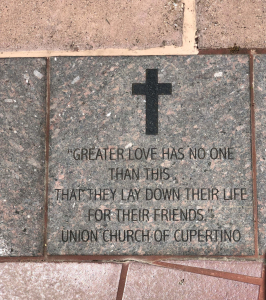Veterans’ Day
Armodoxy for Today: Veterans’ Day
A veteran is a person who has had long experience in a particular field. Generically, we use the word to refer to military personnel, especially those who actively served in the military. The veteran is someone who loves country much more than his or her life. That is, the veteran is willing to lay down his or her life for the country, for something that is greater than the self.
In the Gospel of John (15), Jesus say, “Greater love has no one than this: to lay down one’s life for one’s friends.” He is referring to his own sacrifice, and his words define true love as a function of selflessness. He places value on friendship (harmonious living with one another). That value is measured by life itself – a willingness to sacrifice life for the benefit of the greater good. The sacrifice made by veterans has the greatest value of anything or any action, because the measuring “currency” is more precious than silver, gold and even platinum. That’s why we refer to it as paying the ultimate price: life itself.
Veteran’s Day is celebrated today. It is yet another chance for self-evaluation. There is a simple test to take on this day. Ask yourself, what are the things that are most important to me? What are the things for which I would be willing to give up my life. Now ask yourself, if I’m willing to die for it, am I willing to live for it?
If we are willing to die for Christ, then the more important question we must ask ourselves is, am I willing to live for Christ? Armodoxy is the proof that living out Christian principles is much harder than dying for them.
We pray Psalm 27, The Lord is my light and my salvation, whom shalI I fear? The Lord is the stronghold of my life; of whom shall I be afraid? One thing have I asked of the Lord, that will I seek after, “That I may dwell in the house of the Lord, that will I seek after; That I may dwell in the house of the Lord all the days of my life, to behold the beauty of the Lord, and to inquire in His temple. Amen.



